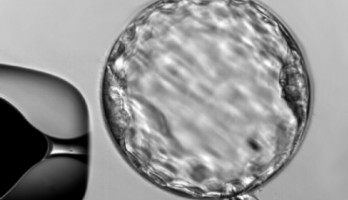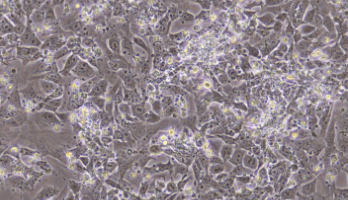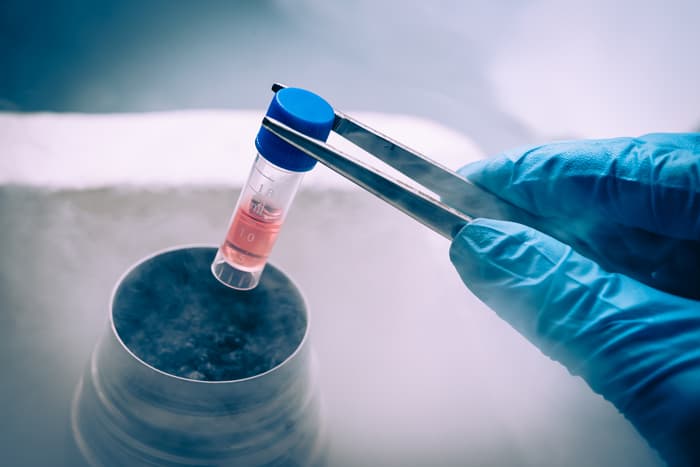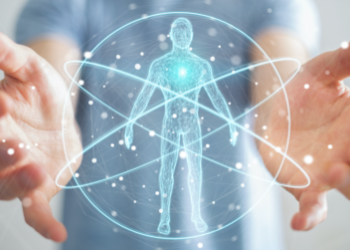Pluripotent stem cells are the mothers of all cells, including other types of stem cells.
They are the earliest form of cells found at the early stage of life, within the first few days after conception.
It is from these cells that the body forms with more than 200 types of specialized cells from these initial pluripotent stem cells.
The fact that these pluripotent stem cells are not specialized means that their DNA hasn't been limited in its expression yet, their differentiation potential unlimited.
Where do pluripotent stem cells come from?
-

Our human pluripotent stem cells (hPSC) are continually cultured in our labs. They were originally derived from the inner cell mass of a 100-200 cell human blastocyst.
-

At this blastocyst stage of development, the function of each human cell has not yet been determined. That means that they have not yet become differentiated cells (specialized cell types), such as skin cells, blood cells, brain cells, nerve cells, liver cells, bone marrow cells, etc.
-

When these early-stage undifferentiated cells are cultured in a laboratory, they can multiply and grow for a long time. Stemaid scientists are still growing the initial line that was prepared 15 years ago.
Properties of pluripotent stem cells

- High telomerase activity - an enzyme that preserves the length of telomeres. (Telomeres are the caps at the end of each strand of DNA that protect our chromosomes.)
- Wide range of clinical applications in treating human disease and chronic conditions.
- Have inherent pluripotency without need of introducing Yamanaka factors to convert adult somatic cells (most often human fibroblast somatic cells from skin biopsies) into human iPSCsinduced pluripotent stem cells.
- Unmatched capacity to heal and restore youth of aging adult tissues. Unlike mesenchymal stem cells (adult stem cells), this stem cell type can express the cell nuclear DNA of all 220+ specialized cell types in the human body. Thus, they are able to express a unique family of transcription factors, mRNAs, miRNAs, peptides and proteins that have potent regenerative biological activity.
Stemaid™ stem cell products
Stemaid offers the following pluripotent products:
- A standard stem cell line, which provides powerful signaling for up to 36 hours.
- Autologous stem cell lines, which are cultivated from the patient's somatic cell skin sample (an autologous human fibroblast that contains patient's own unique DNA). This line provides additional benefits because the cells remain in the body and become part of its organs. This line is considered stem cell replacement therapy at its finest.
- Plurisomes™, the high-grade exosomal serum derived from our standard pluripotent stem cells line. This concentrated stem cell serum product provides ready-to-act reprogramming transcription factors for repair, remodeling and reprogramming.
What happens when pluripotent stem cells enter the body?
As soon as hPSCs enter the bloodstream, they start working by releasing extracellular vesicles (nanoparticles) that trigger the regeneration and repair process throughout the body. Within 30 minutes, signaling results in novel physiological activity in all types of cells. In addition, there is a release of all kinds and types of stem cells,from various parts of the body. The multipotent stem cells that are stored in all organs (tissue-specific stem cells) are activated into replication and reparative biological activity - the neural stem cells in the brain, cardiac progenitor cells in the heart, adult blood-forming stem cells (hematopoietic stem cells)in the bone marrow, and so on.
Once the cascade of regenerative signaling is complete, the pluripotent stem cells naturally tend towards differentiation. As soon as this process occurs, in the case of the standard line, these cells are swiftly removed by the immune system. This healthy response averts any concerns of rejection, including immune rejection and graft rejection. What remains in the body is a potent regenerative signaling cascade that your own cell mass and adult stem cells utilize to help you repair. This 'butterfly effect' of regenerative biological activity lasts weeks and months after the therapeutic applications of stem cells.
Depending on the conditions, the pluripotent cells and their bioactive serum, Plurisomes, can be delivered through the bloodstream or directly to the tissues that need repair.
Plurisomes™ - Pluripotent exosomes
All stem cells release exosomes that contain a unique family of transcription factors. The are immunomodulatory, neurotrophic, angiogenic, anti-fibrotic, healthy growth promoting and senolytic.
The most unique factor of Plurisomes is the epigenetic reprogramming process pluripotent transcription factors kickstart in the tissues. This process is a type of incomplete reprogramming, in that it reverses the metabolic age of the cells to a younger and healthier state, without going all the way back to pluripotency. This is very important in rejuvenation and regeneration of damaged tissue. Recent study series in cellular reprogramming, lead by scientific Stanford and Harvard University teams have called pluripotent transcription factors secreted by pluripotent stem cells the 'potential fountain of youth'.
The effects of pluripotent cells and their pluripotent exosomes make them the most potent stem cell therapy to treat all disease models, including cardiovascular disease and neurodegenerative diseases. In the future, with further advancements in cloning and CRISPR biotechnology, the autologous pluripotent stem cells and autologous iPSCs may provide some solutions for genetic diseases. For now, metabolic and degenerative diseases respond best to therapeutic applications of pluripotent stem cells and Plurisomes™.
References
Browder, K.C., Reddy, P., Yamamoto, M. et al. In vivo partial reprogramming alters age-associated molecular changes during physiological aging in mice. Nat Aging, 2022 https://www.nature.com/articles/s43587-022-00183-2
Sarkar TJ, Quarta M, Mukherjee S, Colville A, Paine P, Doan L, Tran CM, Chu CR, Horvath S, Qi LS, Bhutani N, Rando TA, Sebastiano V. Transient non-integrative expression of nuclear reprogramming factors promotes multifaceted amelioration of aging in human cells. Nat Commun. 2020 Mar 24;11(1):1545. doi: 10.1038/s41467-020-15174-3. PMID: 32210226; PMCID: PMC7093390. https://www.nature.com/articles/s41467-020-15174-3.pdf
Sebastiano V, Zack DJ. We Shall See? N Engl J Med. 2021 May 6;384(18):1766-1768. doi: 10.1056/NEJMcibr2034927. PMID: 33951368. https://pubmed.ncbi.nlm.nih.gov/33951368